(Note: This story appears in the June 2021 issue of Storerotica Magazine)
Debra Peterson is in charge of marketing and procurement, and one of her favorite things about Fairvilla is her front-row seat to the chain’s community-oriented campaigns and fundraisers.
Fairvilla director of procurement and marketing Debra Peterson was doing niche marketing and public policy work in 1995 when her friend since childhood, Shari Murphy, and her husband Bill asked Peterson to do marketing for their Fairvilla adult stores. They were looking for Peterson to broaden their customer base—attracting more women and couples. Peterson considered it, deciding it could be fun and interesting.
SE legal correspondent Larry Kaplan spoke to Peterson, who has been with Fairvilla since Shari and Bill’s initial inquiry 20-plus years ago.

SE: What was it like for you at the beginning with Fairvilla?
PETERSON: It was uncharted territory, but we had our eye on a direction. We brought in experienced people to achieve that. Within about a year, we hired a CEO with Disney experience and an eye for design and interior space. We had a small buying team that I became close to over time.
We worked hard adding or modifying stores, so the entrances were inviting, and on changing our messaging; just reinventing ourselves. We chose to make every store unique to its environment.
I left and just consulted for Fairvilla for about three years when my children were small. When I returned, we were losing a buyer. I’d previously worked closely with our buying team. I switched gears to purchasing coordination and buying.
SE: Was that a bit of a different stretch from what you were doing?
PETERSON: We’re still small with only five locations, plus outsourced online. We don’t do our warehousing. But we think big. We love events, marketing, and involvement in our communities. As purchasing coordinator/buyer, I still worked with marketing, setting up booths at numerous pride and lifestyle events, takeover events; it’s in our DNA.
SE: What separates Fairvilla stores from other adult retailers where customers could shop? What are the defining characteristics?
PETERSON: Our team members set us apart. Our industry’s turned a corner into sexual health and wellness. Fairvilla’s fun, inviting, but super educational. We have a resource manager, we redeveloped our training tools. Sales assistants complete two levels of training about anatomy, product materials, how things work, with other layers available. We’ve also developed our online consumer- oriented Fairvilla University. Customer feedback is often super complimentary of knowledgeable staff—how much they felt accepted. We have team members who’ve been selling almost as long as I’ve been here. It’s impressive.
SE: Talk about Fairvilla’s evolution from theaters to big- box to the first modern adult retailers, catering to women and couples.
PETERSON: Originally, we were a twin-cinema. Bill quickly realized that big blockbuster adult movies were drawing people, but with VHS emerging, people wanted take-home movies. When we first became a big-box retailer, it was Fairvilla Adult Video, 8,000 square feet of wall-to-wall video, and magazines. About the time I arrived, we began transitioning gradually into Fairvilla Megastore. As the market shifted, we evolved into more adult products and games and less video. We’ve always wanted a store where people could come in without feeling intimidated.
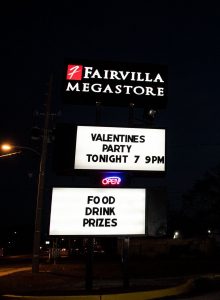 SE: How are you attempting to lure more women and couples? Has your marketing to achieve that changed over the years?
SE: How are you attempting to lure more women and couples? Has your marketing to achieve that changed over the years?
PETERSON: It’s similar, but your tools relate to the moment. We’re fortunate to have brands like Wow Tech’s Lily Allen driving messaging, being able to talk about it and send it out through our social media. People’s eyes stop on that, mainly our target demographic. But we want to be a store for everyone. We might be advertising to bridal events, talking to college students, or working with local gynecologists or LGBTQ+ organizations. The message is: Fairvilla should be a store for anybody, no matter their age, background, however they identify. Everybody appreciates a clean, well-organized, well-lit store with enough staff to talk intelligently about the products displayed, especially when considering the types of products.
SE: What are some of the best-selling categories?
PETERSON: This year, everything’s selling. Men’s products have been off the chart. Lots of people stayed home for safety. Our success wasn’t just the stimulus checks; it was also because of reductions in other forms of entertainment. Nobody was going into movies, bars, or restaurants, leaving more to spend on at-home activities. People were interested in exploring and trying things and willing to go out and put their money down and experiment or get something they’ve always wanted. Apparel and lingerie have done wonderfully. Almost every category’s blossomed. I’m now facing many new products, finally making it to market and trying to determine what direction we’ll go for summer.
“We feel strongly about being a part of where we live. Our Cape (Canaveral) store did considerable work recently for local food banks. We’re also working with an upcoming local arts event, the Fringe Festival. Efforts for the arts community, LGBTQ+ groups locally, and food pantries are our favorites.” — Debra Peterson
SE: Are there any specific products within the categories you mentioned that are going crazy?
PETERSON: Because of the internet and the cam sites, anything mentioned on social media really hit it. In particular, Lush 2.0 by Lovense. We’ve done fine with Autoblow. It seemed like whenever we would mention things like Womanizer, they would catch fire. Almost everything’s done well. App-enabled products have gotten more attention too. We do fantastic business with Wow Tech. They’re terrific partners. We’ve done fine with apparel. We have great partnerships with Escante’ and Fantasy Lingerie and their curve line.
People are shopping brand names and also shopping for anything they see. Sometimes it’s an influencer catching fire. Sometimes things not generally on the market or unavailable to retailers; something somebody on TikTok said was great.
With tons of companies today, we curate our product lines for customers. We’re still working hand-in-hand with some wonderful large manufacturers; CalExotics, Doc Johnson. They’re essential; their products do phenomenal. But also these new, small and medium-sized brands, like Vēdo, do fantastic. Their price points are solid. They’ve gained ground with good designs.
We’ve been able to expand our selections. Just because they’re not on Tiktok doesn’t mean they’re not excellent choices. People often say, Hey, I saw this one. We respond, here’s something very similar that might be better and has a warranty. We have various price points. There’s a definite need for mid-range for so many people. But also people wanting to ensure they have a five-year warranty, or something completely waterproof, or the latest cutting-edge technology. We love to bring in unique things; that’s part of what we do, too.
SE: With so much product emerging, what types of toys grab your attention first at trade shows? How do you sift through everything to ensure you’re realizing your ROI? PETERSON: We’re drawn in by design, by packaging. Part of what we focus on at the end of the day is margin. With a great item, I have to see how it can work with our lineup and mix. Retail customers have been trained over time to expect rewards, loyalty programs, couponing. Between costs for shipping, handling, processing, exchanging, getting it on the floor, the cost of that employee selling it, if you add a discount on top of it, they have to understand that the low keystone isn’t attractive to most retailers.
I like some of the innovations appealing to the 420 market. Many cannabis-themed products are fun and doing well. Not just $300 products; we look for innovation across the board, uniqueness, and trends. I go past the booth, or I’m online, virtually at the booth. There are certain touchstones we look at. It’s all of those things that decide for us.
If I’m considering a new line, how well that will translate on the sales floor? Looking at the box, how is it displayed? Can you see the product in the package? How hard is it to open? We’re looking at a myriad of things, form, reliability, and at the relationship to that manufacturer, or if we’re buying through a distributor, ensuring it’s a reliable manufacturer.
SE: What’s your biggest pet peeve when buying product?
PETERSON: We test products before they walk out the door. If the box has so many security seals that I can’t get into it, then I end up tearing up the box. Or when boxes come in damaged because they’re just not sturdy, I hear about it. I’m not generally in the stores. But when I do occasionally sell product, it’s very frustrating. We complain about the simple things, but it means a lot when I’m out on the floor with torn packaging that I can’t fix, and it’s hard to get replacement packaging. That’s frustrating.
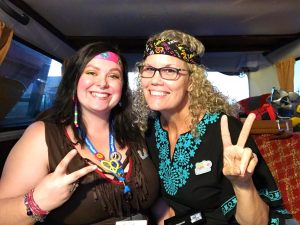 SE: Tell us about your fundraisers and awareness campaigns?
SE: Tell us about your fundraisers and awareness campaigns?
PETERSON: We’ve done all kinds of things. We supported a local AIDS charity, the Hope and Help Center, through a headdress ball. We created huge headdresses and also donated money. I’ve sat on boards. We’re working with 26Health, an organization providing health care for the LGBTQ+ community. In Key West, we coordinated and implemented a red-ribbon bed race that raised money for AIDS help. It was great fun but an incredible amount of work. But it was part of being in the community; we feel strongly about being a part of where we live. Our Cape store did considerable work recently for local food banks. We’re also working with an upcoming local arts event, the Fringe Festival. Efforts for the arts community, LGBTQ+ groups locally, and food pantries are our favorites. We’ve also worked with the Mustard Seed, which helps people get back on their feet. I couldn’t be happier. That’s one of my big things for any company where I work; that they give back to their community.
SE: Can you explain the differences between your three brands? And the areas?
PETERSON: The megastore was our original. We had other megastores, like the 14,000-square foot Cape Canaveral store. When we sold that store and went to the smaller footprint without the adult retail license, we didn’t feel that name fit. And the Sexy Things moniker just wouldn’t work for that community. People still knew who we were. We went with Fairvilla Boutique, which has a different color scheme. We’re more focused on apparel but still have some great intimacy and wellness items. Sexy Things was the spin-off for needing a name that would grab the attention of people who had no idea who we were. So we put that name down in Key West, and of course, over at the smaller International Drive store. A Sexy Things store is a scaled- down version of the megastore, a nice smaller feel. It still has much the same great products, intimacy, wellness, fun novelty items, games, and party, but in a 3,000 square foot store, rather than 8,000-12,000 square feet. The boutique is just a super soft side of Fairvilla, heavily focused on intimacy and wellness.
Larry Kaplan has been the Legal Correspondent for ED Publications for 21 years. Mr. Kaplan is a broker in the sale and purchase of adult retail stores and adult nightclubs and the Executive Director of the ACE of Michigan adult nightclub state trade association. Contact Larry Kaplan at 313-815-3311 or e-mail larry@kaplanstoresales.com.


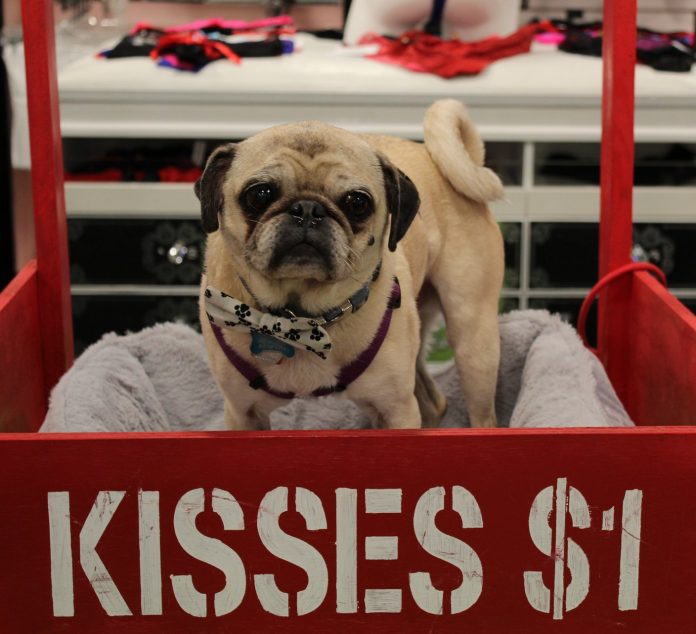
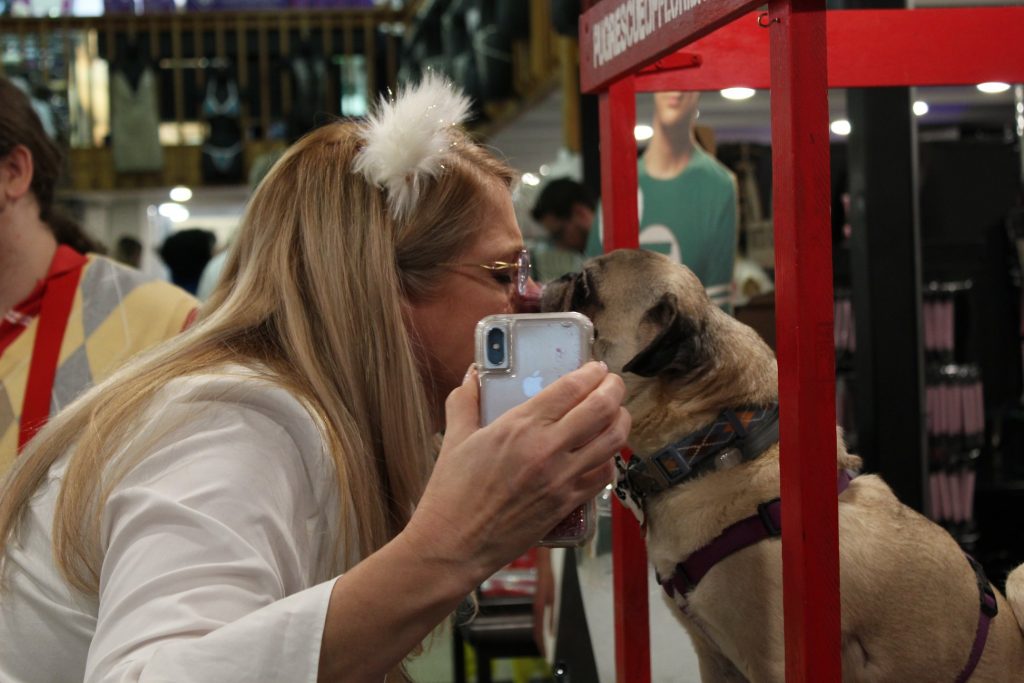

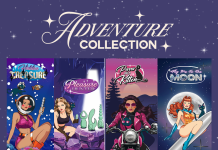









You must be logged in to post a comment.